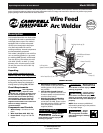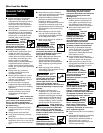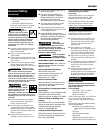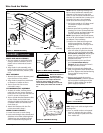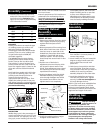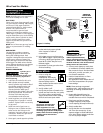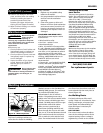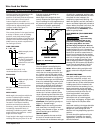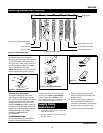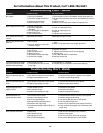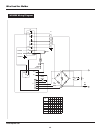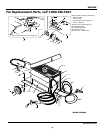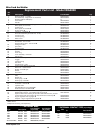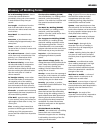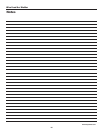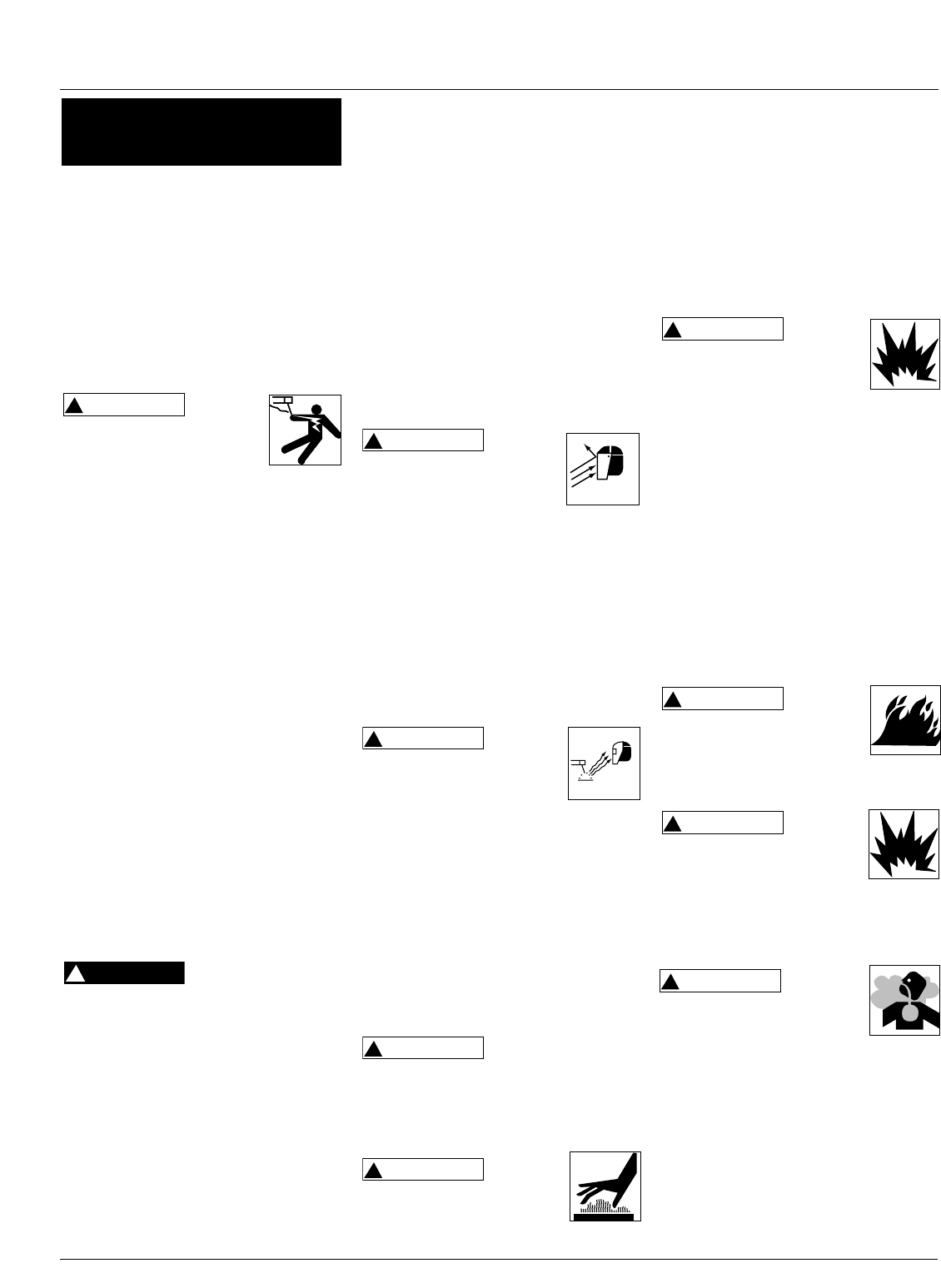
2
Wire Feed Arc Welder
● Before starting or servicing any
electric arc welder, read and
understand all instructions. Failure
to follow safety precautions or
instructions can cause equipment
damage and/or serious personal
injury or death.
● All installation, maintenance, repair
and operation of this equipment
should be performed by qualified
persons only, in accordance with
national, state, and local codes.
Improper
use of
electric arc welders can cause
electric shock, injury, and
death! Take all precautions
described in this manual to reduce the
possibility of electric shock.
● Verify that all components of arc
welder are clean and in good
condition prior to operating the
welder. Be sure that the insulation
on all cables, wire feed gun, and
power cords is not damaged.
Always repair or replace damaged
components before operating
welder. Always keep welder panels,
shields, etc. in place when operating
the welder.
● Always wear dry, protective
clothing, welding gloves, and
insulated footwear.
● Always operate welder in a clean,
dry, well ventilated area. Do not
operate it in humid, wet, rainy, or
poorly ventilated areas.
● Be sure work piece is properly
supported and grounded before
beginning any electric arc welding
operation.
● Coiled welding cable should be
spread out before use to avoid
overheating and damage to
insulation.
Never immerse the
wire or wire feed
gun in water. If the welder becomes
wet for any reason, be absolutely
certain that it is completely clean and
dry before using!
● Always shut equipment off and
unplug power prior to moving
welder.
● Always attach work lead first.
● Verify that work piece is securely
grounded.
● Always shut off electric arc welding
equipment when not in use, and cut
off any excess wire from wire feed
gun.
!
DANGER
!
WARNING
● Never allow any part of body to
touch wire and ground or grounded
work piece at the same time.
● Awkward welding conditions and
positions can be electrically
hazardous. When crouching,
kneeling or at elevations, be sure to
insulate all conductive parts, wear
appropriate protective clothing, and
take precautions to prevent injury
from falls.
● Never attempt to use this equip-
ment at current settings or duty
cycles higher than those specified
on the equipment labels.
● Never use an electric arc welder to
thaw frozen pipes.
Flying
sparks
and hot metal can cause
injury. As welds cool, slag
can be thrown off. Take all
precautions described in this manual to
reduce the possibility of injury from
flying sparks and hot metal.
● Wear ANSI-approved (American
National Standards Institute-
approved) face shield or safety
glasses with side shield protection
when chipping or grinding metal
parts.
● Wear ear plugs when welding
overhead to prevent spatter or slag
from falling into ears.
Electric
arc
welding operations produce
intense light and heat and
ultraviolet (UV) rays. The
intense light and UV rays can cause
injury to eyes and skin. Take all
precautions described in this manual to
reduce the possibility of injury to eyes
and skin.
● All persons operating this
equipment or in the area while
equipment is in use must wear
protective welding gear including
welding helmet or shield with at
least a rating of shade 10, flame
resistant clothing, leather welding
gloves, and full foot protection.
Never look at arc
welding operations
without eye protection as described
above. Never use a shade filter lens
that is cracked, broken, or rated below
number 10. Warn others in the area not
to look at the arc.
Electric
arc
welding operations cause
sparks and heat metal to
temperatures that can cause
severe burns! Use protective gloves
!
WARNING
!
WARNING
!
WARNING
!
WARNING
and clothing when performing any
metalworking operation. Take all
precautions described in this manual to
reduce the possibility of skin and
clothing burns.
● Make sure that all persons in the
welding area are protected from
heat, sparks, and ultraviolet rays.
Use additional face shields and
flame resistant barriers as needed.
● Never touch work pieces until
completely cooled.
Heat and
sparks
produced during electric arc
welding and other metal-
working operations can
ignite flammable and explosive
materials! Take all precautions
described in this manual to reduce the
possibility of flames and explosions.
● Remove all flammable materials
within 35 feet (10.7 m) of welding
arc. If removal is not possible,
tightly cover flammable materials
with fireproof covers.
● Do not operate any electric arc
welder in areas where flammable or
explosive vapors may be present.
● Take precautions to be sure that
flying sparks and heat do not cause
flames in hidden areas, in cracks,
behind bulkheads, etc.
Fire
hazard!
Do not weld on containers or
pipes that contain or have
contained flammable
materials or gaseous or liquid
combustibles.
Arc
welding
closed cylinders or containers
such as tanks or drums can
cause explosion if not
properly vented! Verify that any
cylinder or container to be welded has
an adequate ventilation hole, so that
expanding gases can be released.
Do not
breathe
fumes that are produced by
the arc welding operation.
These fumes are dangerous.
If the welding area cannot be
adequately ventilated, be sure to use
an air supplied respirator.
● Keep head and face out of welding
fumes.
● Do not perform electric arc welding
operations on metals that are
galvanized or cadmium-plated, or
that contain zinc, mercury or
beryllium without adhering to the
following precautions:
!
WARNING
!
WARNING
General Safety
(Continued)
www.chpower.com
!
WARNING
!
WARNING



